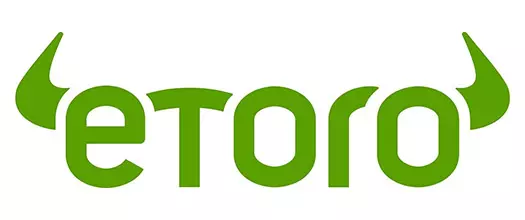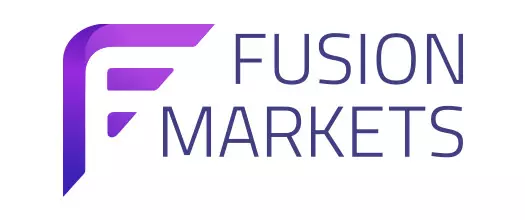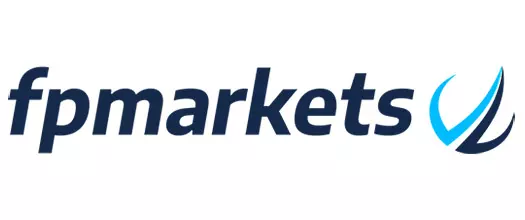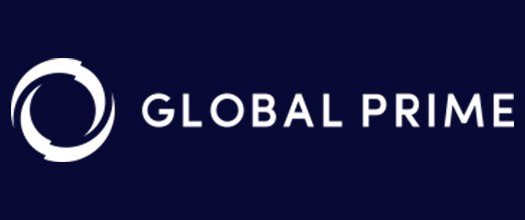- Jump to:
- Main features of the best Canada Forex brokers
- Forex Legislation
- Financial Regulators
- Payment Methods
- Trading Software
- Mobile Trading
- FAQ
Our team of expert traders tested many regulated and trustworthy forex brokers that accept traders from Canada and compiled a top list featuring the best of them. Each broker operating in Canada received a quality score based on several factors, including Trustpilot rating, regulation, fees and commissions, available trading platforms, customer service, and more.
 Plus500 USThis content applies only to Plus500 US and clients from the United States. Trading futures involves the risk of loss.
Plus500 USThis content applies only to Plus500 US and clients from the United States. Trading futures involves the risk of loss. eToro61% of retail investor accounts lose money
eToro61% of retail investor accounts lose money Fusion Markets74-89% of retail's CFD accounts lose money
Fusion Markets74-89% of retail's CFD accounts lose money FP Markets73.85% of retail investor accounts lose money
FP Markets73.85% of retail investor accounts lose money Global Prime74-89% of retail CFD accounts lose money
Global Prime74-89% of retail CFD accounts lose money AxiThe vast majority of retail client accounts lose money
AxiThe vast majority of retail client accounts lose money
Below you can find a comprehensive comparison table of forex brokers for traders in Canada. We rank them based on several factors, including regulation, spreads and commissions, Trustpilot rating, trading instruments, trading platforms, and deposit and withdrawal methods.
Our team has thoroughly evaluated all brokers listed below using TradingPedia’s exclusive methodology.
Main features of the best Canada forex brokers
- Brand
- Trading platforms
- Minimum deposit
- Regulations
- Trading instruments
- Spreads
- Leverage for Forex CFDs
- Leverage for Crypto CFDs
- Leverage for Indices CFDs
- Deposit methods
- Withdrawal Methods
- Commission per Lot
- Contact details
Canada, the home of ice hockey and maple syrup, is a North American country with a population of 37.6 million and a gross domestic product of $354.3 million in the third quarter of 2019 alone. The country comprises ten provinces along with three territories. It boasts a stable and mature foreign exchange market.
Forex trading is well regulated in the Great White North, although some brokerages consider the regulatory framework in the country unfavourable. This is the primary reason why there is a small number of domestic brokers in Canada.
There is no universal foreign exchange trading legislation across the country. The exact regulations vary between Canada’s different provinces and territories. The forex market is additionally overseen at federal level, which creates a challenge from the perspective of brokerages.
There are as many as fifteen different regulatory authorities in the country, two federal ones, along with thirteen provincial ones. Before they venture into the foreign exchange markets, Canadian traders must gain a proper understanding of the forex regulations applicable in the province or territory in which they are based.
Canada forex legislation
All brokerages operating on Canadian soil must be licensed and overseen by the Investment Industry Regulatory Organization of Canada (IIROC). The forex markets are regulated either as derivatives or as securities. Canada-friendly brokerages must have a physical presence in the country to offer their services to locals.
Licensed brokerages are permitted to sell contracts for difference (CFDs) to Canadian customers, but they are expected to prominently display the risks associated with this financial instrument on their websites.
The brokers must also carefully evaluate the levels of knowledge and experience of each customer to determine whether they are competent enough to trade volatile CFDs. Additionally, the companies must establish cumulative loss limits for all customers’ accounts.
Canadian regulators have also set rules regarding the maximum leverage Canada-friendly brokerages can offer to customers from the country. The ceiling on leverage for retail clients ranges between 1:45 and 1:50.
The exact ratio differs depending on which currency pairs one trades. Hedging is not an option for Canadian customers; this practice is considered illegal here. With that in mind, leverage is higher for major currencies and lower for minor and exotic pairs due to their increased volatility.
An extra level of protection is added through an insurance policy called the Canadian Investor Protection Fund (CIPF). At the time of writing, there are more than 170 brokerages that offer this type of insurance to Canadian customers, with maximum coverage of CA$1 million if a broker declares insolvency.
The CIPF is a non-profit programme launched by the regulators across all provinces and territories of the country. It should be mentioned that this policy protects you only if your broker files for bankruptcy.
This compensation is not applicable if clients lose their funds through trading or because of fraud. To ensure your chosen broker is a member of the scheme, you can directly call the CIPF or speak to your investment adviser.
Speaking of fraud, scams are uncommon at reliable Canada-friendly trading websites because brokerages that violate the regulatory framework risk heavy penalisation and licence revocation. While this may not sound like great comfort for the affected parties, such penalisations aim to prevent brokerages from cheating their customers in the first place.
Lastly, each prospective customer is expected to meet the minimum income, net worth and asset thresholds stipulated by their provincial regulatory body. This makes it difficult for some clients to enter the forex markets because they do not have sufficient capital.
Canada financial regulators
As previously mentioned, there are fifteen regulatory bodies in total to oversee forex trading activities in Canada. The main regulatory authority for the foreign exchange markets in the country is the Investment Industry Regulatory Organization of Canada (IIROC).
This non-profit organisation came into being after the Investment Dealers Association (IDA) and Market Regulation Services Inc. merged in June 2008. It controls brokers and all trading activities on the equity and derivatives markets across the country.
As the main watchdog, the IIROC has the right to fine brokers or suspend their licences if they violate its regulatory framework. The regulator conducts adequate oversight to ensure all Canada-friendly brokerages operate in full compliance with its framework and high standards.
The sector is also overseen by the umbrella regulator, the Canadian Securities Administrators (CSA). The latter is tasked with improving, harmonising, and coordinating the country’s financial market. The organisation consists of the regulatory bodies in Canada’s ten provinces and three territories.
Other than that, each province has its own regulator. For example, the forex market in the province of Quebec is overseen by the local Autorité des Marchés Financiers (AMF). In British Columbia, forex trading contracts are regulated as securities and fall under the jurisdiction of the British Columbia Securities Commission. The Financial Services Commission and the Ontario Securities Commission oversee the market in Ontario.
Canada forex payment methods
Canada-friendly brokerages provide their customers with various trading instruments, including foreign exchange trading, indices, stocks, commodities, cryptocurrencies, and exchange-traded funds (ETFs).
However, before you can start trading with real money, you will have to fund your live account. Each brokerage has its own recommendations regarding the minimum starting capital customers need to begin their trading experience.
The good news is that Canadian brokers give their clients a choice of many different payment methods. Debit and credit cards by Maestro, Visa, and Mastercard are broadly available across all reputable Canada-friendly providers of forex trading.
This is the preferred method of many traders from the Great White North thanks to its convenience and time-efficiency. The limits for card deposits differ between brokerages, but the minimum usually ranges between CA$50 and CA$100.
Another option for traders from Canada is to initiate wire transfers, either in person or via their bank’s online banking system. Wire transfers are significantly slower than card payments, as they take between two and five business days. On the plus side, there are usually no restrictions on the maximum amount you can transfer to your live account balance.
Cheques are also readily accepted by Canadian brokers. However, they rank among the slowest payment methods because they require between five and ten business days. Usually, the requirement is for the cheque to be written in either USD or CAD.
Many websites support electronic funds transfers, commonly known as EFTs. This method enables you to move funds directly from your online banking balance to the bank account of the brokerage. Needless to say, the bank account should be in your name for you to initiate an EFT transaction.
Digital wallets like Skrill and Neteller are also commonly accepted. Customers from Canada can register their live accounts in CAD as the base currency to avoid conversion charges. In many cases, there are no additional fees on payments on the brokerages’ side, but you may be charged for inactivity if your account remains dormant for a long period.
Popular trading software in Canada
Available trading software and tools can differ significantly between Canada-friendly brokerages, although many prefer to use the independently developed platforms of MetaQuotes Software. The latter has designed two trading platforms, each serving a different purpose.
The first option is the MetaTrader 4 (MT4) software, which has acquired the status of a gold standard among traders worldwide. It is available for retail trading through specific Canada-friendly brokers.
The platform is optimised for trading on the forex markets. Among its most distinctive traits are its easy deployment and intuitive design. MetaTrader 4 is ideal for beginner traders. They can benefit from great functionalities such as copy trading and auto-trading with the help of Expert Advisors.
The software also appeals to experienced traders, who can take advantage of its advanced charting capabilities and tools for technical analysis. Available in dozens of languages, MetaTrader 4 can be installed on a variety of desktop and mobile devices. It centres on the forex markets.
Canadians who prefer to trade stocks and commodities are advised to try MT4’s successor, MetaTrader 5. It supports more timeframes than its predecessor and offers numerous charting options, in-built technical indicators, and analytical and graphical objects.
The newer platform was designed in the MQL5 programming language. This enables traders knowledgeable in coding to create custom-made technical indicators. MetaTrader 5 is considered a better option for Canadians who trade with multiple brokers, as it allows them to move between multiple accounts with great speed, ease, and efficiency.
Both platforms are available for free download. However, Canadian traders who do not feel like installing additional software on their devices can execute their trades directly in their browsers thanks to the broad availability of the MetaQuotes WebTrader.
The web-based version gives you instant access to the markets via most browsers and operating systems. It upholds the highest security standards, as all data transmitted between you and your brokerage is heavily encrypted.
The browser version also allows you to execute trades with a single click. Similarly to the downloadable platforms, WebTrader is equipped with multiple timeframes (ranging from one minute to one month), detailed trading history, technical indicators, and graphical objects.
Mobile trading in Canada
Data compiled by Statista show that Canadians are avid smartphone users, with the number of people who own mobile phones exceeding 25 million in 2018. Most brokerages that accept traders from the Great White North cater to popular demand and ensure access to their products on the go, giving Canadian customers complete control over their trading activities.
There are separate native apps for Android and iOS, which can usually be downloaded either directly from the brokerages’ websites or from the two major mobile software platforms, Google Play and the App Store. Users can keep a close eye on their positions and take advantage of any unexpected price movements in the markets.
They can create watchlists and easily manage their orders on the go. The apps give you all the functionalities associated with the desktop experience, combined with greater convenience and flexibility.
Canada-friendly brokerages that use the MetaQuotes platform can usually be accessed on the go via the MT4 or MT5 mobile apps. The latter offer an equally smooth experience to their desktop counterparts and mirror them feature-wise.
Mobile users will benefit from limit and stop orders, advanced chart monitoring, access to their full trading histories, analytical objects, a variety of timeframes, and dozens of technical indicators.









